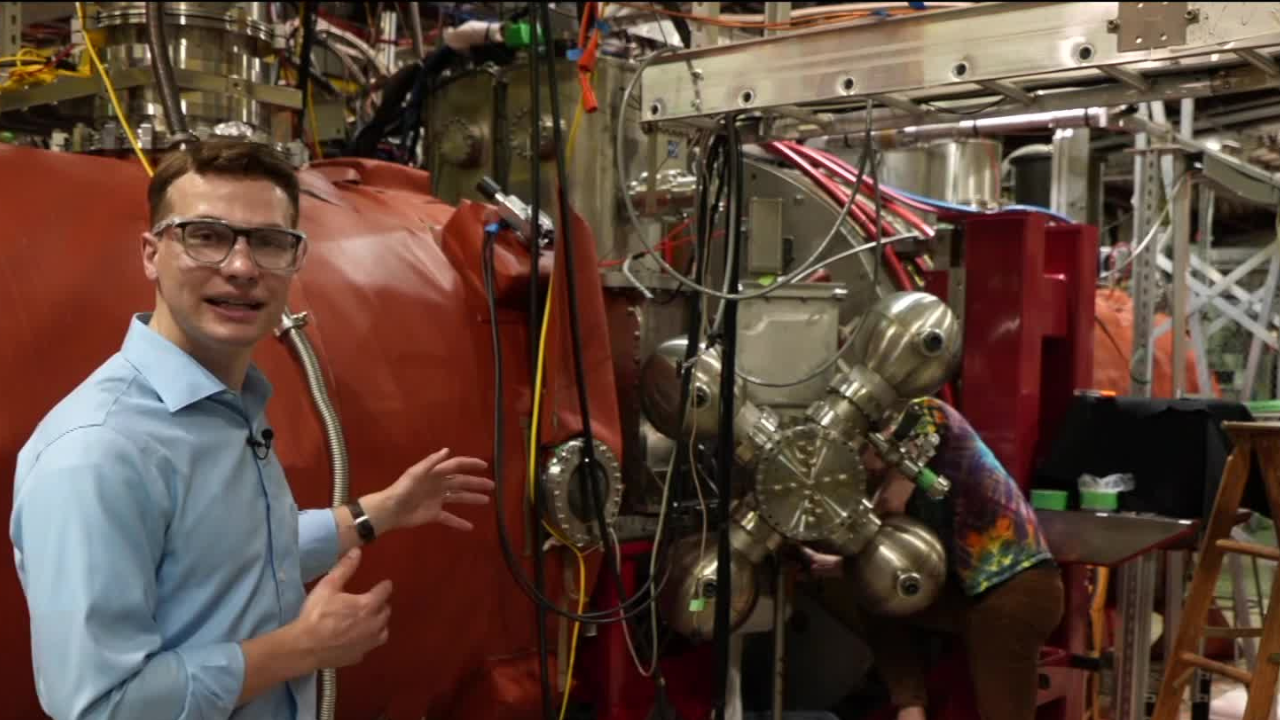MADISON, Wis. — Researchers and state lawmakers want to make Wisconsin a leader in next-generation nuclear energy production, building on the state’s already robust nuclear research environment.
Three of the country’s 25 nuclear fusion companies are located in Wisconsin, with ties to the top-ranked nuclear engineering program at UW-Madison. A package of bills in the state Legislature would pave the way for these companies and others to eventually build fusion reactors in the state.
Nuclear fusion, which is seen by some scientists as the “holy grail” of clean energy sources, is cleaner and safer than the fission process used by traditional nuclear power plants. It uses small amounts of readily available materials to create massive amounts of energy.
The traditional approach of nuclear fission relies on splitting atoms to release energy. It is the same process used in atomic bombs. Nuclear fusion, meanwhile, combines atoms to release energy. It’s the same way the sun generates energy.
Nuclear fusion reactions are easy to stop and don’t run the risk of causing nuclear meltdowns. They produce far less radioactive waste than fission, and the waste produced by nuclear fusion is also less hazardous than the waste produced by fission.
Watch: State lawmakers want to pave the way for Wisconsin's unique nuclear power research
“The second you’re not in the perfect stability conditions, the whole thing cools off and the reaction stops immediately,” Elliot Claveau, an experimental scientist with Stoughton-based Realta Fusion, said. “What makes it so hard to do is also what makes it so safe.”
To date, scientists have only been able to create fusion reactions for short periods of time. They are currently searching for ways to sustain and contain the extremely high temperatures needed to consistently produce energy.
Realta Fusion, which is working in partnership with UW-Madison on a magnetic mirror reactor, hopes to put its first commercial reactor online by the early 2030s. Last year, the company’s prototype reactor generated plasma for the first time.
“I don’t think there’s anywhere else in the world that has that much expertise and that many big, national-scale experiments on fusion than University of Wisconsin,” Claveau said. “This machine could not have been built anywhere else.”
Some state lawmakers want to make it easier for nuclear fusion companies to build in Wisconsin once their reactors become commercially viable. Two bills in the state Legislature would require state regulators to conduct a survey of potential sites for nuclear power facilities and host a nuclear power summit in Madison.
“By having a siting study, we’re able to accelerate the options for investors, innovators, for locating next-generation nuclear power here in Wisconsin – by nearly two years,” Republican Rep. David Steffen, who authored the bills, said. “We’re gonna be showing the nation and the world that Wisconsin will be a leader both in energy generation from nuclear as well as energy research and economic development from nuclear.”
State support for nuclear fusion research could be bipartisan. Democratic Gov. Tony Evers included funding for a nuclear power citing study in his budget proposal, and several Democrats have signed onto a Republican-authored resolution that would signal the Legislature’s support for nuclear energy research.
As the scientists at Realta Fusion look to the future, they want to find a site for their first commercial reactor that offers easy access to the engineers, manufacturers, and customers necessary to make a reactor viable.
“It takes a village to build this, and the more the state can help to build this critical mass of a supply chain for the industry, I think that would be a huge help,” Derek Sutherland, the company’s head of research and development, said. “Fusion could be Wisconsin’s big market that I think we could then export around the world.”
It’s about time to watch on your time. Stream local news and weather 24/7 by searching for “TMJ4” on your device.
Available for download on Roku, Apple TV, Amazon Fire TV, and more.



